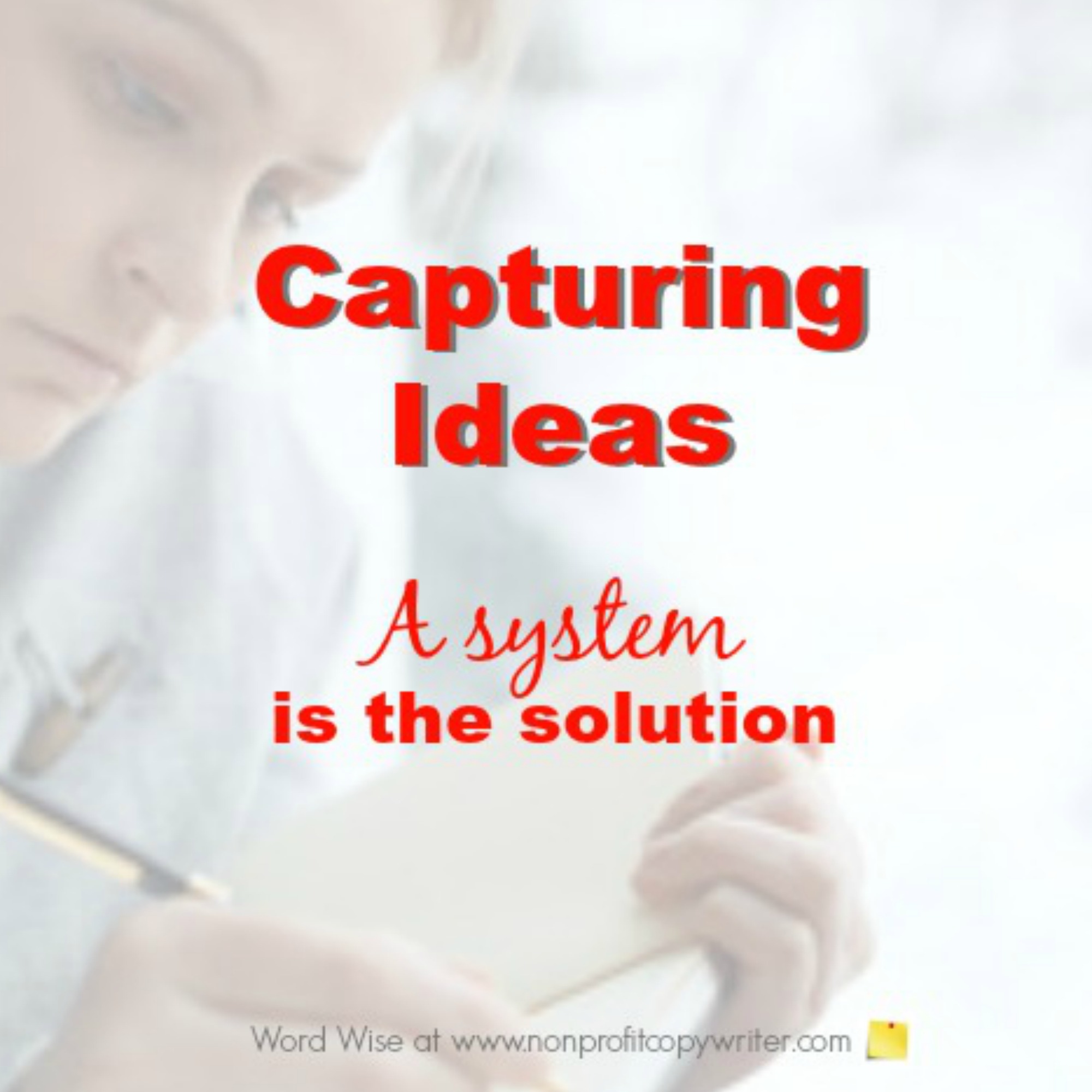Save Time: Get 5 Simple Writing Tips
you can put to use in 10 minutes
Capturing Ideas for Writing Projects
Award-winning writer Kathy Widenhouse has helped hundreds of nonprofits and writers produce successful content , with 750K+ views for her writing tutorials. She is the author of 9 books. See more of Kathy’s content here.
Updated 1.26.24
Capturing ideas is a crucial step in the writing process.
You haven’t truly adopted the “ideas-are-everywhere” mindset of a writer until you figure out a way to capture the ones that come your way.
You need to find a way to remember them. Your ideas can be one of your most valuable resources because they are unique to you.
Capturing Ideas: Try Different Systems
A system is the solution — a way to record or organize your ideas.
Writers use all kinds of different ways to capture their ideas. It doesn’t matter how you capture ideas.
What matters is that you do.
Here are few of the ways writers keep track of the ideas that come to them. Experiment with different approaches to find what works for you.
Capture Ideas in Your Journal
If you regularly jot down thoughts in a journal, then you also know to review those notes to look for patterns or to recall an idea. You can even create a special code or use colored pens or pencils to label your ideas. And if you don’t journal yet, consider starting.
Capture Ideas on Your Phone
A thought comes to you while you’re in the car, sitting in traffic, or whizzing down the highway. Other times you snap a picture of a news item you see while reading a magazine in the doctor’s office or record an audio message for yourself on your phone while you’re working in the kitchen — all with the intent to process the information later. Yes, there is an app for that! Use a note-taking smartphone application (Evernote or Catch All, for instance) to help you collect and organize your ideas.
Capture Ideas on Paper
Keep a small notepad beside your bed, in your handbag, in your pocket, at your desk, or all of them. Jot down notes as they come to you on a scrap of paper — yes, even on a napkin in the restaurant. Pop those scraps into a file folder (see Files, below.)
Capture Ideas on Your Computer
Websites, email, pins: ideas come my way as I read online. Save those ideas in bookmarks in your browser, file folders in your email application, and boards in Pinterest. Computer files offer advantages: convenience (you can access content with just a click) and back up (you can access them remotely when you back up your files to the Cloud.)
Capture Ideas in Files
One advantage of having physical file folders is that you can save hard copy ideas that come your way in magazine articles (yes, tear it out), flyers, junk mail, or letters. another other piece of paper in folders labeled by topic.
More about The Writing Process
Planner or Pantser? Make 3 Steps in the Writing Process Work for You ...
Use "The Power of One Principle" to Write More Memorable Content ...
How to Test an Article Idea ...
7 Brainstorming Techniques for Writers ...
How To Write Faster: Use Bursts AND Binges ...
Avoid Panic: A Practical Way to Estimate Writing Time for a Project ...
How to Narrow Your Article Main Idea ...
Secret of Success: Know How to Set and Achieve a Writing Goal ...
The Writing Process: a key to writing faster and better ...
How to find the main idea of your piece before you write ...
How to Write a Thesis Statement ...
4 Writing Styles: When to Use Each One ...
Pre-Writing: 4 Easy Steps to Make Your Writing Go Faster ...
3 Tips for Starting Your Writing Project ...
How to Write an Introduction (or Lead, Lede, Hook) ...
Tips for Writing a Hook for Your Article or Blog Post ...
Tips about the Writing Process on our Pinterest board ...
Return from Capturing Ideas to Nonprofit Copywriter home
As an Amazon Associate I earn from qualifying purchases.
Share This Page

Named to 2022 Writer's Digest list
BEST GENRE/NICHE WRITING WEBSITE


Stop Wasting Time!

Grab your exclusive FREE guide, "5 Simple Writing Tips You Can Put to Use in 10 Minutes or Less"











